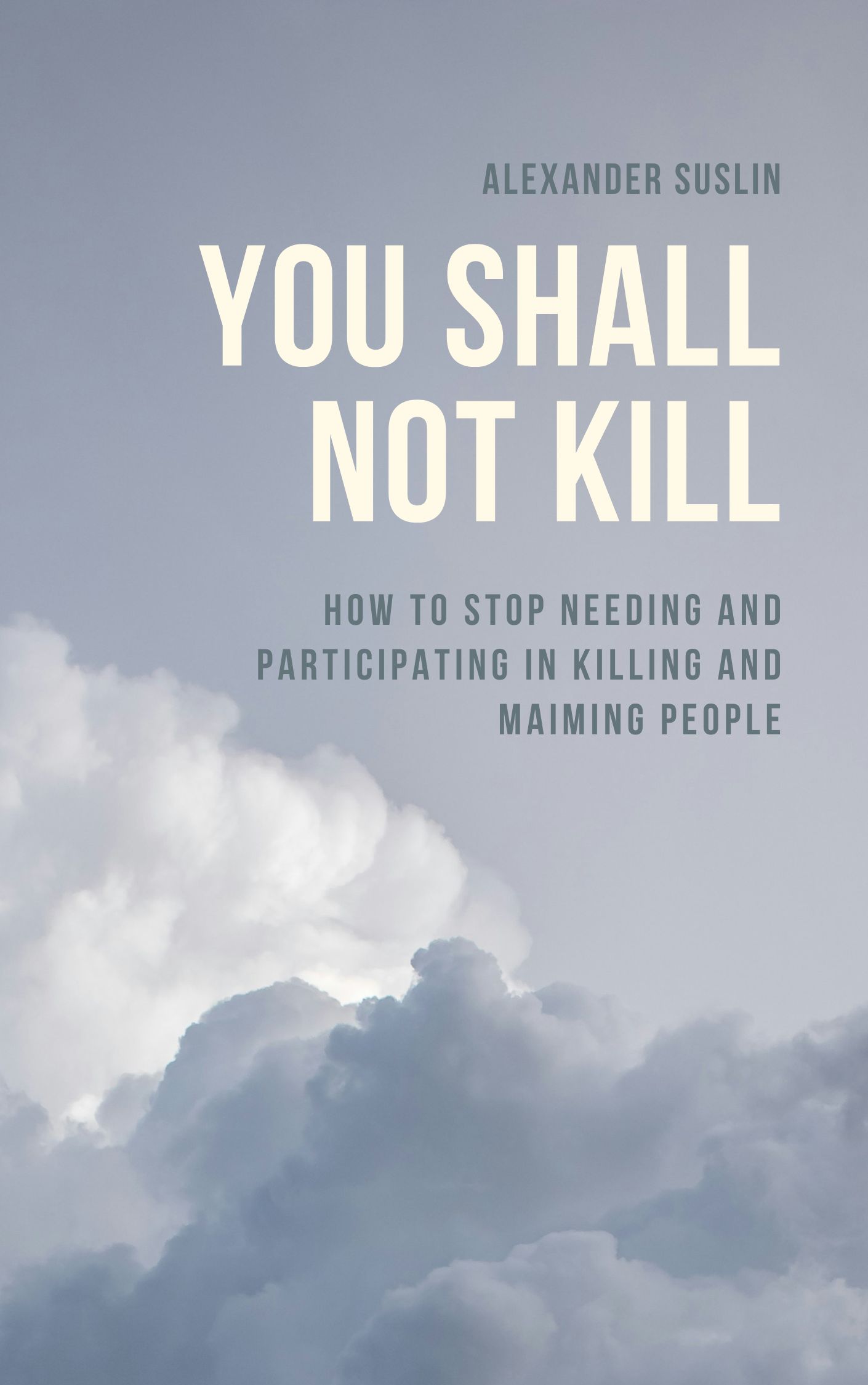In our lives, there is a crime that instantly devalues all our good deeds and initiatives. It is the maintenance of armies, police forces, and other security services that ensure our safety through threats, mutilation, and the killing of people.
Every day, we are told that violence is necessary. Necessary for security. Necessary for order. Necessary for peace. But it is clearly not so.
“You Shall Not Kill” is not just a manifesto, but a practical guide to breaking free from the vicious cycle of violence through personal refusal:
- Refusal to need bloody protection for your values
- Refusal to support legalized violence in the form of military, police, and justice systems
- Refusal to silently consent to a society that approves of killing and maiming
How can we reject violence?
For a long time, people unwilling to depend on or participate in the killing of others to protect their lives, lands, and order have sought — and found — alternative means of protection. This book collects some of them.
Grounded in the teachings of Jesus Christ as interpreted by Leo Tolstoy and summarizing global nonviolence experience, this book reveals:
- How we participate in violence (physically, legally, morally) and why we can’t seem to stop.
- Whether Jesus Christ tolerated the killing and harming of others. We analyze the most controversial Gospel passages.
- How to protect yourself and your loved ones without the use of force. Dozens of methods, developed by humanity’s greatest minds, for ensuring safety without bloodshed.
- True stories of nations and individuals who refused to kill.
- On the great power of humility and love.
This is the essence — practically a digest and a call to action — for everyone who is tired of hearing: “There is no other way.” For all who wish to build a life without needing or participating in violence, here and now.
Table of Contents
- Why do people kill each other (and can't stop)
- "I don’t participate in violence at all"
- What's wrong with us?
- Reasons and assumptions
- How to stop needing and participating in killing and maiming people
- Humility and kindness
- Methods of defense
- Individual means of defense
- Collective methods of defense
- Education and upbringing
- Laws and rights
- Awareness
- Economy and business
- Conflict resolution
- Lifestyle
- Exclusions
- Nonviolence in action: methods and approaches
- “Not in my name”: voluntary renunciation of citizenship by birth (USA)
- A Peace Tax. Our right to stop financing the murders (Russia)
- Why Alternative Civilian Service (ACS) is also dangerous
- Costa Rica: 70 years without an army
- Society without violence and killing. Examples from history
- Jesus and the army. Jesus Christ on the protection of life, homeland, and loved ones
- He made a whip and drove the merchants from the temple
- Give unto Caesar Caesar’s
- Greater love has no one than this, than to lay down one’s life for his friends
- Do not think that I came to bring peace on the earth; I did not come to bring peace, but a sword
- Sell your clothes and buy a sword. Now here are two swords. Enough.
- Sell your clothes and buy a sword (Leo Tolstoy)
- Those who take the sword will perish by the sword
- Blessed are the peacemakers
- Warriors: Go and do not wrong anyone
- All authority is from God. He does not wear the sword in vain...
- He did not ask the Roman centurion to forget his ‘craft’
- This is a special path to the Son of God
- The great power of love





